Introduction
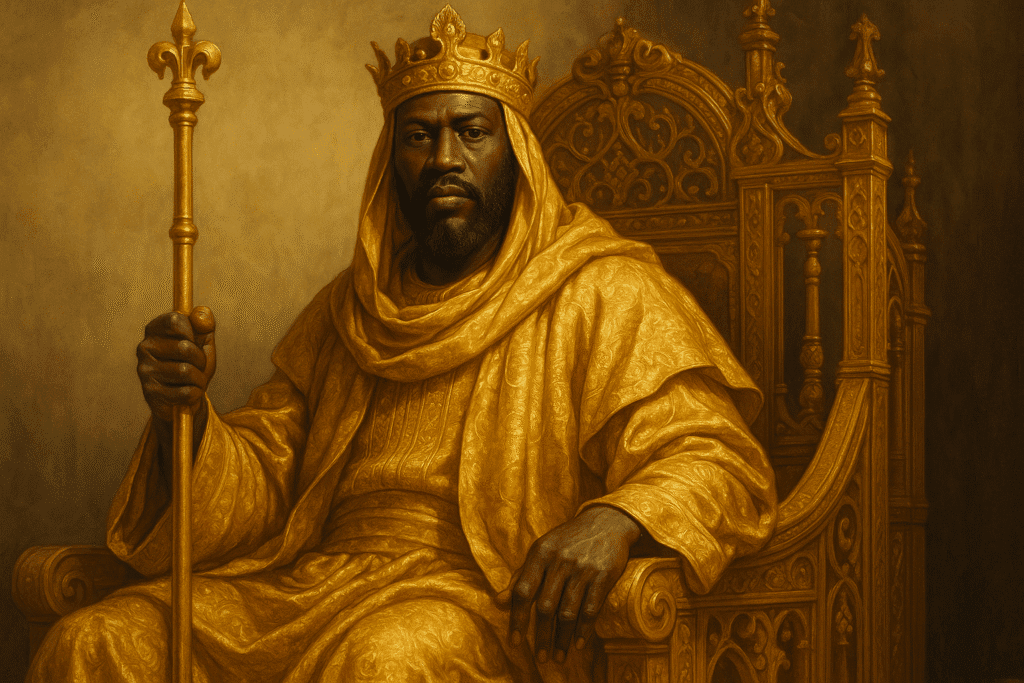
From ancient thrones to golden palaces, history is filled with rulers whose wealth wasn’t just legendary—it was civilization-shaping. These monarchs didn’t merely reign; they controlled the flow of gold, dictated the fate of economies, and left behind legacies built not just on power, but on unimaginable riches.
But one name continues to rise above them all: Mansa Musa I of Mali. Living in the 14th century, this African emperor didn’t just hold power—he practically owned the global gold trade. At the peak of his empire, Mali was responsible for nearly half of the world’s gold, a fact that still boggles economists and historians today.
His pilgrimage to Mecca wasn’t a spiritual journey alone—it was a financial earthquake. Musa gave away so much gold during his travels that he destabilized entire regional economies, triggering inflation in cities he’d never even intended to affect. It wasn’t generosity alone—it was a real-time demonstration of how a single ruler’s wealth could ripple across continents.
In this blog, we’re diving deep into the jaw-dropping riches of history’s most powerful monarchs—not just to marvel at their treasures, but to understand how royal wealth shaped empires, shifted global trade, and in some cases, rewrote the world map. From Africa to Asia and beyond, discover the kings who didn’t just rule nations—they redefined value itself.
Mansa Musa – The Wealthiest King Ever
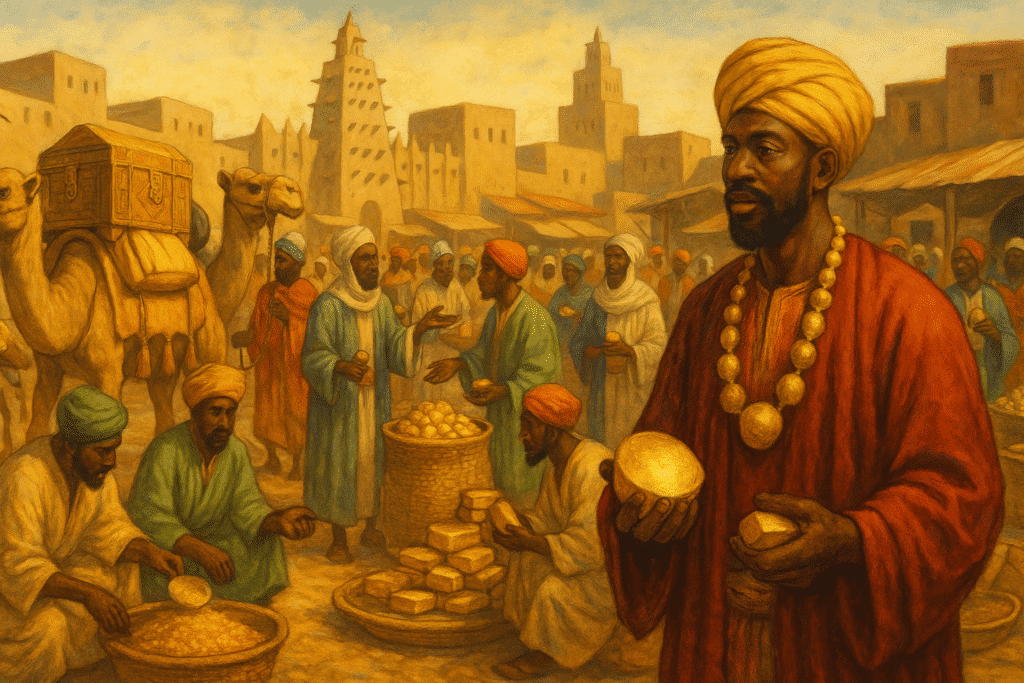
When we think of the wealthiest people in history, modern billionaires like Elon Musk or Jeff Bezos might come to mind. But centuries before stock markets and tech empires, there lived a ruler whose riches were so vast, they sent shockwaves across continents—and no one has matched his fortune since. His name was Mansa Musa I of Mali, and his empire wasn’t just wealthy—it was the beating heart of global commerce.
1. Gold Beyond Imagination: The Untold Fortune of Mansa Musa
During his reign from 1312 to 1337, Mansa Musa presided over one of the richest empires the world has ever seen. The Mali Empire stretched across West Africa, resting atop some of the most abundant gold deposits in existence.
- Mali’s mines were so productive that at one point, they supplied nearly 50% of the world’s gold—a staggering figure when you consider the lack of industrial mining tools at the time.
- Adjusted for modern value, Mansa Musa’s net worth is estimated to have exceeded $400 billion, dwarfing the fortunes of any contemporary billionaire.
- His empire controlled crucial trans-Saharan trade routes, funneling wealth between Africa, Europe, and the Middle East, making Mali a financial superpower of the medieval world.
But his wealth wasn’t locked away in vaults—it was a tool, and Musa wielded it like few rulers ever have.
2. The Pilgrimage That Shocked the World
In 1324, Mansa Musa set off on a pilgrimage to Mecca, as required by his Islamic faith. But this wasn’t a quiet spiritual retreat—it was a spectacle of wealth on a global scale.
- His entourage was more like a mobile kingdom: tens of thousands of soldiers, attendants, and slaves, many clad in fine silk and bearing gold.
- He brought so much gold with him—and gave so much of it away in cities like Cairo—that he destabilized local economies for years, causing inflation that echoed for a generation.
- His generosity and regal presence turned heads everywhere. In a time when Africa was often dismissed or misunderstood by outsiders, Mansa Musa’s pilgrimage broadcast the wealth and sophistication of West Africa to the wider Islamic world—and beyond.
This journey transformed how the world perceived Africa, placing Mali on medieval maps and making Mansa Musa a figure of near-mythical reputation.
3. More Than Gold: A Legacy of Culture, Knowledge, and Power
Mansa Musa’s impact didn’t end with gold. He used his wealth to reshape the cultural and intellectual landscape of West Africa, planting seeds that would grow long after his death.
- He expanded Mali’s territory to include cities like Timbuktu and Gao, turning them into bustling hubs of learning, commerce, and religious scholarship.
- He commissioned monumental architecture, most notably the Djinguereber Mosque in Timbuktu, constructed with the help of architects he brought from Cairo.
- Under his patronage, libraries, universities, and religious schools flourished, helping Timbuktu become one of the great academic centers of the Islamic world.
In doing so, Mansa Musa created a fusion of wealth, religion, and education rarely seen in history. His reign strengthened the fabric of Islamic culture in Africa and created intellectual bridges between continents.
A King Like No Other
Mansa Musa wasn’t just rich—he redefined what it meant to be wealthy. His reign is a masterclass in using economic power to drive education, faith, architecture, and international recognition. Even today, his story feels almost mythical—a reminder that wealth, when combined with vision, can shape civilizations.
As modern societies obsess over billionaires and markets, perhaps it’s time we look back at Mansa Musa—not just as the richest man who ever lived, but as a ruler who turned his gold into legacy.
Other Historically Wealthy Kings
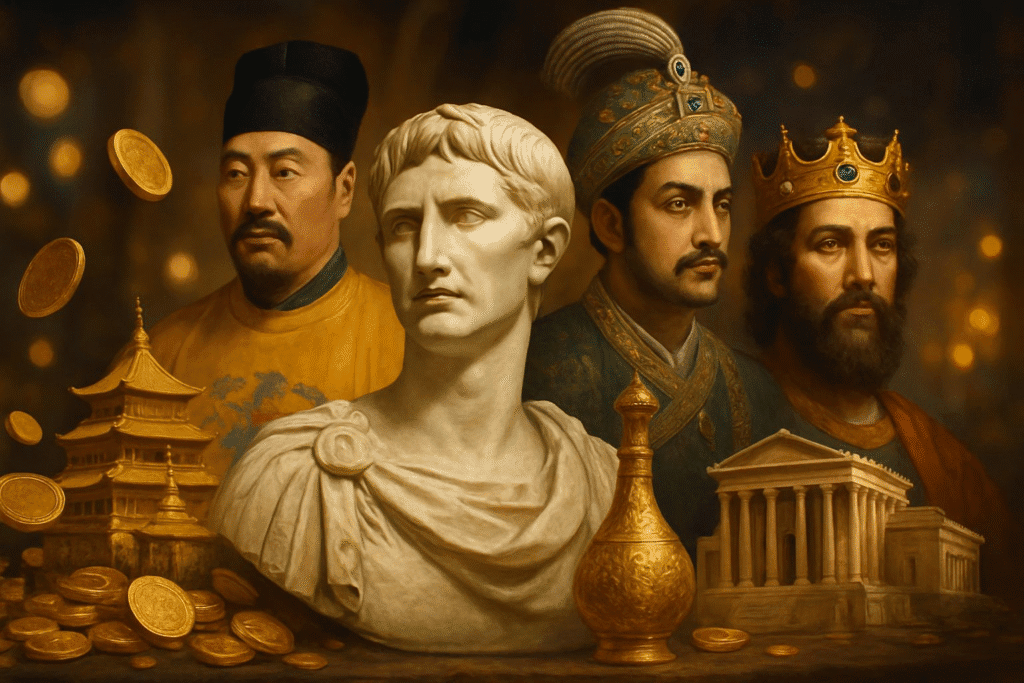
While Mansa Musa often steals the spotlight as history’s wealthiest ruler, he was not alone in wielding vast fortunes that altered the course of nations. Across continents and centuries, powerful monarchs accumulated immense riches—not just through inheritance or luck, but through military conquests, trade mastery, resource control, and visionary governance.
Let’s explore some of the most influential kings and emperors whose wealth redefined global power structures and left enduring marks on civilization.
1. Augustus Caesar (63 BCE – 14 CE): The Billionaire Emperor Who Built an Empire
Long before corporate empires dominated headlines, Augustus Caesar ruled the Roman world with a fortune so vast, modern estimates value it at $4.6 trillion.
- As the first emperor of Rome, Augustus inherited the riches of a war-torn republic and transformed it into a unified, tax-efficient, and expansionist empire.
- His wealth wasn’t limited to gold—it included vast swaths of land, military spoils, and control over the empire’s treasury.
- Augustus channeled his wealth into monumental architecture, military dominance, and infrastructure that elevated Rome into one of the most powerful civilizations in history.
He didn’t just rule an empire—he financed it from his own vaults.
2. Emperor Shenzong of the Song Dynasty (1048–1085): The Patron of China’s Golden Age
Under the Song Dynasty, China experienced an economic renaissance, and Emperor Shenzong stood at its center.
- This era saw revolutionary advancements in printing, metallurgy, agriculture, and maritime trade—boosting state revenue to unprecedented levels.
- Shenzong presided over an economy so robust that China accounted for a significant portion of global GDP at the time.
- His reign also introduced innovative fiscal policies, including land reform and progressive taxation, enhancing imperial wealth while strengthening domestic stability.
What set him apart wasn’t just wealth—but how technology and policy were woven into prosperity.
3. Akbar the Great (1542–1605): The Empire-Builder of the Indian Subcontinent
Akbar, one of the most revered rulers of the Mughal Empire, transformed India into a flourishing economic and cultural powerhouse.
- His empire thrived on the export of spices, silks, cotton, and precious gems, all traded across Asia and the Middle East.
- Akbar introduced a centralized tax system and promoted religious tolerance, which allowed for a unified and efficient administration.
- His immense wealth financed not only military campaigns but also palatial cities, gardens, and schools, laying the foundation for Mughal architectural brilliance.
Akbar didn’t just expand territory—he cultivated a legacy of harmony, luxury, and learning.
4. King Solomon (970–931 BCE): The Biblical Icon of Prosperity
Mentioned in religious texts as the wisest and richest of kings, Solomon’s wealth has become legendary, blending historical speculation with spiritual significance.
- He ruled over a united kingdom of Israel during a period of peace and prosperity, drawing tribute from neighboring nations.
- Ancient accounts describe immense reserves of gold, spices, and ivory, and he is said to have amassed 500 tons of gold over his reign.
- His crowning achievement, the construction of the First Temple in Jerusalem, became a symbol of both faith and imperial wealth.
Whether literal or symbolic, Solomon’s riches represent an ideal of divine-endorsed prosperity.
5. Tsar Nicholas II (1868–1918): The Imperial Fortune That Fell to Revolution
The last emperor of Russia, Tsar Nicholas II, ruled over a land teeming with natural resources—and with it, one of the largest royal fortunes in modern history.
- His assets included gold mines, oil fields, factories, and nearly half of Russia’s arable land, giving him control over the backbone of the empire’s economy.
- In today’s terms, his wealth would have placed him among the top global elites, yet it stood in stark contrast to the suffering of the common people.
- The Russian Revolution in 1917 brought it all crashing down—turning palaces into museums and sealing the fate of a dynasty.
His story is a stark reminder that wealth without reform can become a catalyst for collapse.
Wealth That Moved the World
These rulers did more than accumulate riches—they wielded their fortunes like tools of power, diplomacy, and legacy. Whether funding monumental structures, transforming economies, or influencing global trade, their wealth reshaped the course of human history.
As we reflect on modern billionaires and market movers, history reminds us: true power has always been more than numbers—it’s about how wealth is used to build, influence, or endure.
How Kings Accumulated Wealth
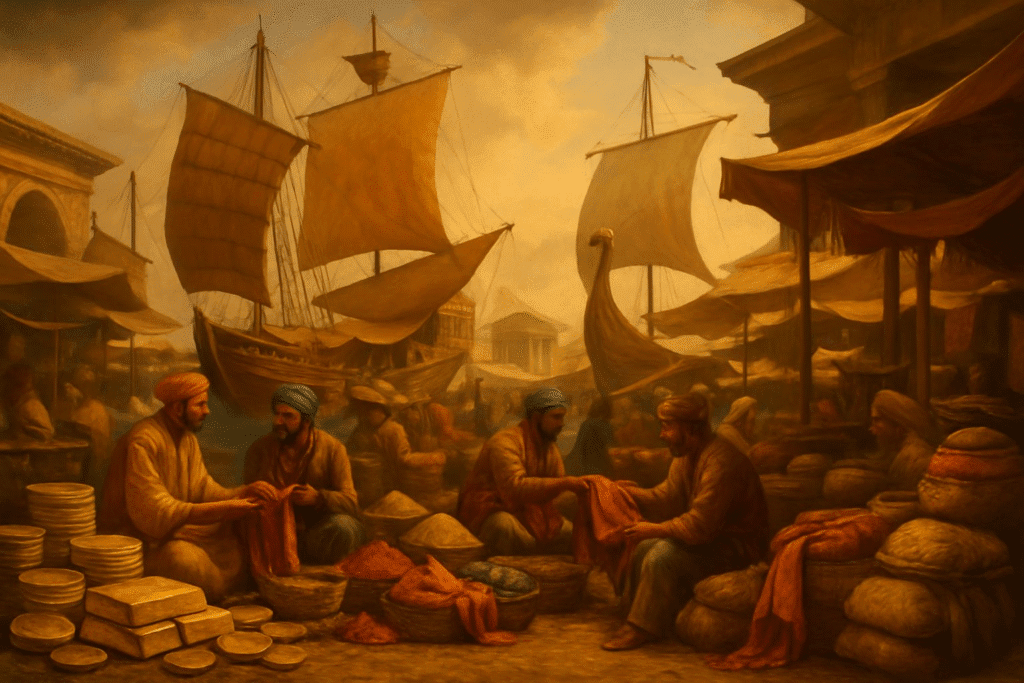
Modern wealth may come from stocks and startups, but long before the age of capitalism, monarchs held the ultimate power over wealth—land, labor, and law. From battlefield victories to shrewd economic policy, rulers throughout history built vast fortunes that didn’t just support their courts—they shaped civilizations.
Here’s a deeper look at the key forces behind royal wealth that changed the course of history.
1. Conquest: Wealth Won on the Battlefield
For many kings, the road to riches was paved with warfare. Victory didn’t just bring prestige—it unlocked massive economic rewards.
- Military campaigns often resulted in the seizure of gold, land, livestock, and labor from conquered regions.
- Defeated kingdoms were looted for treasure, while local populations were taxed—or enslaved—to fund the new regime.
- Beyond material plunder, conquests allowed rulers to control strategic trade routes and resource-rich territories, turning war into a long-term economic investment.
From Alexander the Great to Genghis Khan, conquest was a fast (if brutal) path to unparalleled wealth.
2. Trade and Resource Control: The Lifeblood of Royal Treasuries
Kings who sat atop critical resources—or the roads that moved them—had access to limitless income.
- Monarchs who controlled gold mines, salt flats, spice fields, or fertile farmland were effectively in charge of their region’s economy.
- Trade routes like the Silk Road, Indian Ocean maritime lanes, and Trans-Saharan caravan networks funneled wealth from across continents.
- Many rulers enforced tariffs, tolls, and state-run monopolies, ensuring that a cut of every transaction enriched the crown.
Control the commodities, and you control the kingdom—and sometimes, the known world.
3. Taxation and Smart Governance: Turning Power into Profit
A powerful king wasn’t just a warrior—he was a strategist, often backed by a complex fiscal system that made empire-wide wealth sustainable.
- Monarchs imposed taxes on landowners, merchants, peasants, and even religious institutions to ensure a steady stream of revenue.
- Some rulers revolutionized state finance with innovative tax policies that boosted income without sparking rebellion. For example, Mughal emperor Akbar introduced scalable land tax based on crop output, ensuring fairness and sustainability.
- That wealth was often reinvested in military strength, infrastructure, and cultural prestige, such as roads, temples, and public works—all of which reinforced a king’s control.
Taxation wasn’t just about revenue—it was about legitimacy, stability, and expansion.
4. Dynasties and Inherited Fortunes: The Accumulation of Generational Wealth
Not all royal wealth was earned in a single lifetime. Many kings were born into centuries of accumulated privilege, with access to assets built by their ancestors.
- Dynasties passed down land, castles, jewels, art, and influence, giving each new ruler a stronger financial foundation than the last.
- Strategic marriages between royal families often merged massive estates and resources, creating powerful alliances and economic empires.
- In some cases, monarchs partnered with elite merchants and bankers to secure loans or profit-sharing arrangements, tying royal fortunes to the emerging financial class.
A strong dynasty wasn’t just about blood—it was a mechanism of wealth preservation and political power.
The Economics of Empire: Lessons From Royal Riches
Behind every golden crown was a complex network of policies, people, and power structures designed to keep wealth flowing toward the throne. Whether through warfare, trade, taxation, or dynastic planning, monarchs in history built financial empires long before Wall Street existed.
Understanding how royal wealth was built helps us see how economies, governments, and societies evolved—and why the legacy of these kings still echoes in modern economic systems.
The Impact of Royal Wealth on Society
Behind every gilded throne and towering monument lies a deeper truth—wealthy monarchs didn’t just rule people; they engineered entire civilizations. The fortunes they amassed weren’t merely symbols of power—they were active forces that shaped economies, cultures, and even the global order.
Let’s dive into how royal wealth sculpted the world, from the foundations of empire to the birth of modern class systems.
1. Economies Built by Crowns: The Fiscal Muscle of Kings
For many monarchs, wealth wasn’t just personal—it was political. Their control over trade, taxation, and natural resources turned kingdoms into economic engines.
- Monarchs often monopolized trade routes, levying tariffs and taxes that channeled wealth directly into the royal treasury.
- With vast fortunes at their disposal, kings invested in roads, ports, marketplaces, and military logistics, fueling internal commerce and external expansion.
- Some rulers—like Mansa Musa of Mali—held so much wealth that their spending literally disrupted global economies. Musa’s gold giveaways during his pilgrimage to Mecca caused inflation across North Africa and the Middle East for over a decade.
Royal treasuries weren’t just storage rooms for riches—they were the financial heartbeat of empires.
2. Culture in Gold: How Monarchs Funded Civilization’s Masterpieces
History’s greatest cultural achievements were often sponsored by kings and queens, whose wealth transformed art, science, and architecture into tools of legacy.
- Lavish fortunes funded iconic monuments such as the Taj Mahal (built by Mughal Emperor Shah Jahan), Versailles (commissioned by Louis XIV of France), and the Forbidden City in China. These weren’t just buildings—they were manifestations of imperial vision.
- Wealthy rulers employed scholars, painters, architects, and musicians, leading to golden ages of cultural and intellectual growth. The Renaissance, for instance, was partly driven by the patronage of wealthy noble houses and monarchs.
- Royal influence extended beyond the arts into fashion, cuisine, language, and rituals, setting trends that filtered down to the rest of society and became embedded in national identity.
Without royal funding, many of the world’s greatest cultural landmarks and traditions might never have existed.
3. The Rise of Class Systems: How Royal Wealth Defined Social Order
While palaces glittered, peasants toiled—and the contrast between the two was no accident. Royal wealth often cemented rigid class structures that defined societies for centuries.
- Monarchs used their economic dominance to control land ownership, legal systems, and religious institutions, creating a top-down power structure with royalty at the peak.
- Titles, privileges, and access to education were reserved for the aristocracy, while the working class faced heavy taxation and limited mobility.
- In many cases, economic inequality led to rebellion—from the French Revolution to the Russian Empire’s fall, the concentration of royal wealth was often the spark that lit social upheaval.
In many ways, the modern concept of economic class can be traced back to royal households and how they controlled (or withheld) access to opportunity.
4. Global Influence: Wealth as a Diplomatic and Military Tool
A wealthy monarch was more than a ruler—they were a global influencer before the term existed.
- Kings and emperors used their fortunes to forge alliances through lavish gifts, marriages, and military funding.
- Naval fleets, standing armies, and colonial expeditions were all made possible through royal capital, allowing empires like Britain, Spain, and Portugal to project power across oceans.
- Wealthy rulers could sway papal decisions, fund crusades, or even destabilize rival nations economically, proving that money often moved faster than armies.
Royal wealth was never just about grandeur—it was about geopolitical leverage and long-term dominance.
The Golden Legacy of Monarchs
Whether measured in palaces or policies, the wealth of kings and queens didn’t die with them—it laid the foundation for modern nations, global trade systems, and enduring cultural traditions. While the excesses of royal life often led to revolutions and reform, there’s no denying that history’s richest rulers were among its most influential architects.
Today, we live in a world still shaped by the choices those monarchs made—not just in how they governed, but in how they used their wealth to build, control, and define civilization.
The Decline of Royal Wealth
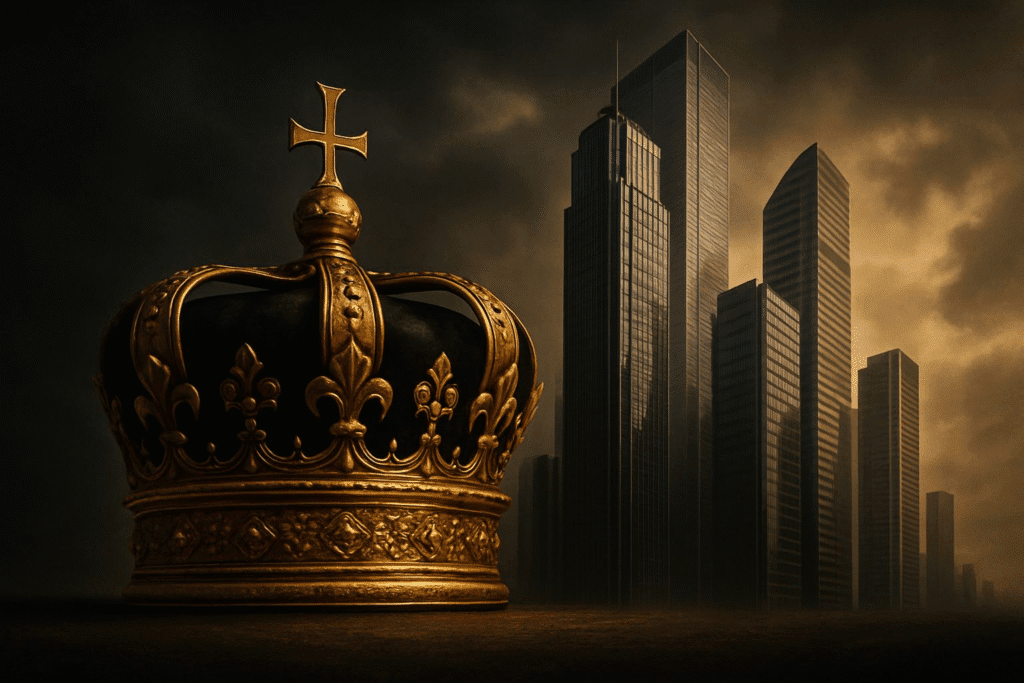
For centuries, kings and queens were the world’s wealthiest individuals, wielding control over land, armies, and entire economies. But as the world evolved, so did the systems that governed wealth. From revolutions to industrial revolutions, the once-untouchable financial power of royalty began to crumble—giving rise to a new breed of economic giants.
Here’s how monarchs lost their grip on global wealth—and how billionaires took their place.
1. Democracy’s Rise: The End of Absolute Financial Control
The shift from absolute monarchy to constitutional governance fundamentally changed how national wealth was managed.
- As countries adopted democratic systems, monarchs lost their authority over taxation, trade, and state assets.
- Parliaments and elected officials took control of public finance, turning monarchs into ceremonial figureheads rather than economic powerhouses.
- In the UK, for example, the Glorious Revolution of 1688 began a long process of transferring fiscal control from the Crown to Parliament—setting a precedent followed by many nations.
Royalty once dictated economic policy; today, most monarchs rely on government budgets for their allowances.
2. Revolutions That Rewrote Economies
Nothing eroded royal wealth more dramatically than political upheaval. Revolutions didn’t just remove kings—they redistributed their fortunes.
- The French Revolution dismantled centuries of aristocratic privilege, nationalizing assets and spreading power to the people.
- In Russia, the Bolshevik Revolution of 1917 ended the Romanov dynasty, seizing their wealth and establishing a new economic order.
- Across Latin America, Asia, and Europe, land reforms and nationalization erased royal landownership, shifting resources into public or state control.
These revolutions weren’t just political—they were economic earthquakes that shattered monarchal dominance.
3. The Industrial Age: From Thrones to Boardrooms
As the industrial revolution swept across the globe, the rules of wealth creation changed forever.
- New wealth no longer came from conquest or royal lineage—but from factories, railroads, and innovation.
- Business magnates like John D. Rockefeller, Andrew Carnegie, and later tech billionaires like Jeff Bezos and Elon Musk redefined the concept of wealth and influence.
- Monarchs who once controlled entire empires were overtaken by corporate leaders who controlled industries and global markets.
The power dynamic shifted: from sovereigns with armies to entrepreneurs with IPOs.
4. Globalization and Economic Policy: Levelling the Playing Field
In the modern era, international systems have further diluted royal financial dominance.
- Global capitalism favors private enterprise over hereditary privilege. As a result, even the wealthiest royals now compete with multinational corporations.
- Many governments impose strict tax policies and limit inheritance-based power, curbing dynastic accumulation.
- Royal families often depend on public funds, tourism, or real estate holdings—not direct economic control. In some cases, like the British royal family, public support is contingent on transparency and economic justification.
Today’s monarchs are less “owners of nations” and more like nationally funded cultural icons.
From Kingdoms to Corporations: A New Financial Order
Once the world’s richest rulers, monarchs have largely stepped aside in the global wealth game. Where kings once held the keys to empires, modern wealth is built in markets, not monarchies. CEOs, investors, and innovators now dominate the financial landscape that kings once ruled.
And yet, the legacy of royal wealth lives on—in palaces turned museums, traditions turned tourism, and histories that remind us just how much the world has changed.
Conclusion
Throughout history, the immense wealth of monarchs wasn’t just a symbol of luxury—it was a powerful engine behind the rise and fall of civilizations. From Mansa Musa’s golden empire to the fiscal reforms of Augustus Caesar, and the cultural legacies of Akbar the Great and Emperor Shenzong, royal fortunes shaped the world’s infrastructure, ideologies, and economies.
These rulers didn’t just build palaces—they laid the foundations for trade networks, intellectual renaissances, and economic systems that would influence generations. And while the modern age has shifted financial power from crowns to corporations, the impact of royal wealth is far from forgotten.
Today, the echoes of these monarchs still resonate in our architecture, art, political systems, and global wealth structures. Their stories serve as a timeless reminder: where power and wealth converge, history is made.
Amazon Books Recommendation Section
These books explore themes related to royal wealth, historical empires, and economic power:
1. The Richest Man Who Ever Lived: King Solomon’s Secrets to Success, Wealth, and Happiness
- Author: Steven K. Scott
- Why It’s Recommended: Explores the wisdom and wealth of King Solomon, offering insights into success and financial prosperity.
- Find it on Amazon: Here
2. The Richest King of All Time: A Thrilling Historical Novel
- Author: Auwerl Serlies
- Why It’s Recommended: A historical novel about Mansa Musa, the wealthiest person in history, detailing his empire and fortune.
- Find it on Amazon: Here
3. The Silk Roads: A New History of the World
- Author: Peter Frankopan
- Why It’s Recommended: Explores trade routes that shaped global wealth, including royal fortunes.
- Find it on Amazon: Here
4. The Wealth of Nations
- Author: Adam Smith
- Why It’s Recommended: A classic book on economic power, trade, and wealth accumulation.
- Find it on Amazon: Here
These books provide valuable insights into historical wealth, royal fortunes, and economic influence
FAQ’s
Who was the richest king in history?
Mansa Musa I of Mali is widely regarded as the richest king ever, with an estimated fortune exceeding $400 billion.
How did Mansa Musa become so wealthy?
His wealth came from Mali’s gold and salt trade, which dominated global commerce in the 14th century.
Were there other kings who were extremely rich?
Yes, rulers like Augustus Caesar, Emperor Shenzong, Akbar the Great, and King Solomon also amassed vast fortunes.
Why did royal wealth decline over time?
The rise of democracy, revolutions, and modern economies shifted power away from monarchs.
Are modern kings as wealthy as historical rulers?
While some royal families remain wealthy, historical kings controlled entire economies, making their wealth incomparable.
